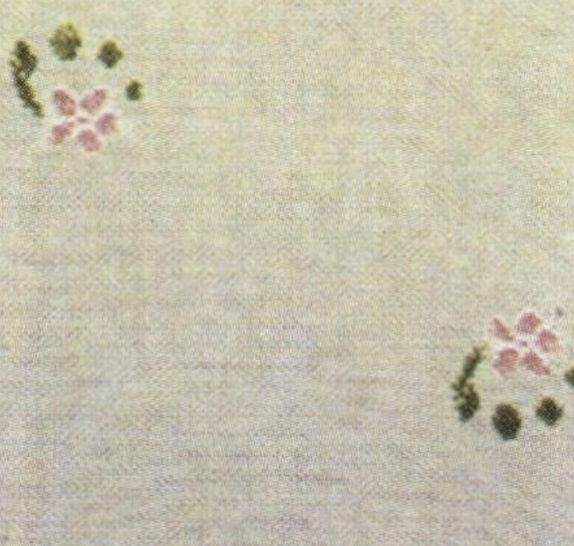Weaving
1/60
There's no tags or description
Looks like no tags are added yet.
Name | Mastery | Learn | Test | Matching | Spaced |
|---|
No study sessions yet.
61 Terms
Weaving Basics
Perpendicular Interlacing of 2 Sets of Yarn
LONGITUDINAL (Vertical) Weave
WARP
Warp threads are called “ends”
LATERAL (Horizontal) Weave
WEFT
Weft threads are called PICKS
Weft
right to LEFT
Weave repetition
basic pattern that get multiplied (repeated) in the woven fabric
Picks
Weft threads
Selvedge
Edge of the fabric
Warp-Weighted Looms
Used from antiquity to middle ages
weights give necessary tension
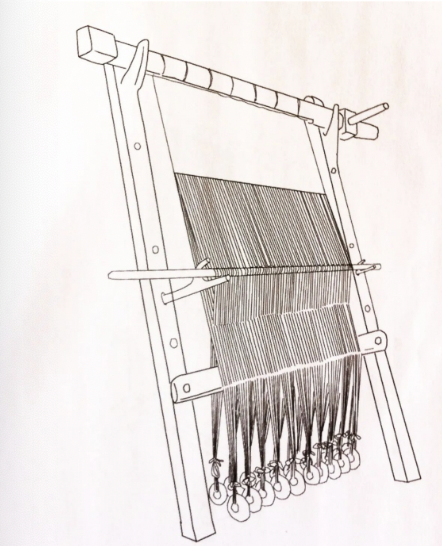
Basics of what happens on a loom
connect several warp ends together and lift them, making it easier to insert weft
Reed
Named that because the first were made from reeds
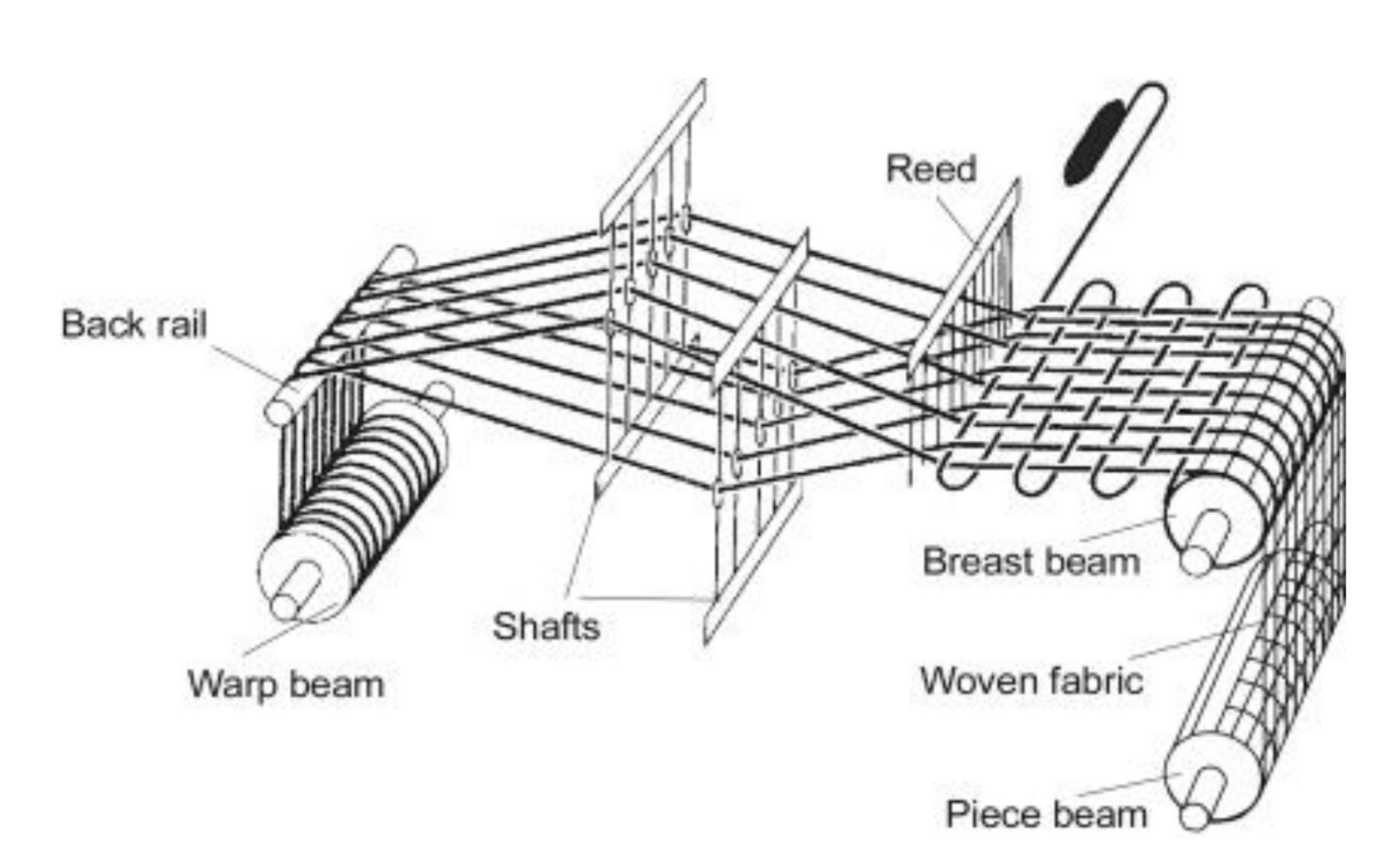
Weaving Steps
Warping
(warp sizing)
Threading and Sleying
Tension
Weft Insertion
Step 1: Warping
preparing warp ends that will be placed in loom
warping board/warping mill/drum
Then sizing and beaming loom
Step 2A: Threading
Attaching warp ends to the shafts through heddles > way the warp is threaded determines a set of possible patterns

Step 2B: Sleying
Taking the warp ends through the dents of the reed at the desired density
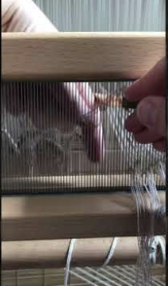
Step 3: Weaving
insertion of weft in the shed
the reed beats the weft thread against the woven cloth
Shed
Space created by the division of the warp into 2 sets of ends, thanks to the action of the shaft
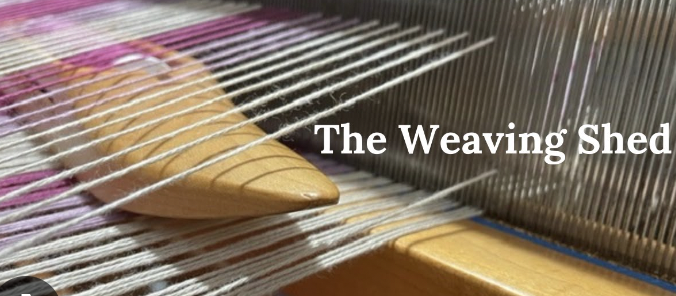
Manually and semi-artisanally
Weaving (S3) is done with a shuttle
Industrially
Weaving (S3) is done with a rapier or air jet
Fundamental Structures for Interlacing Warp and Weft
Plain Weave
Twill
Satin
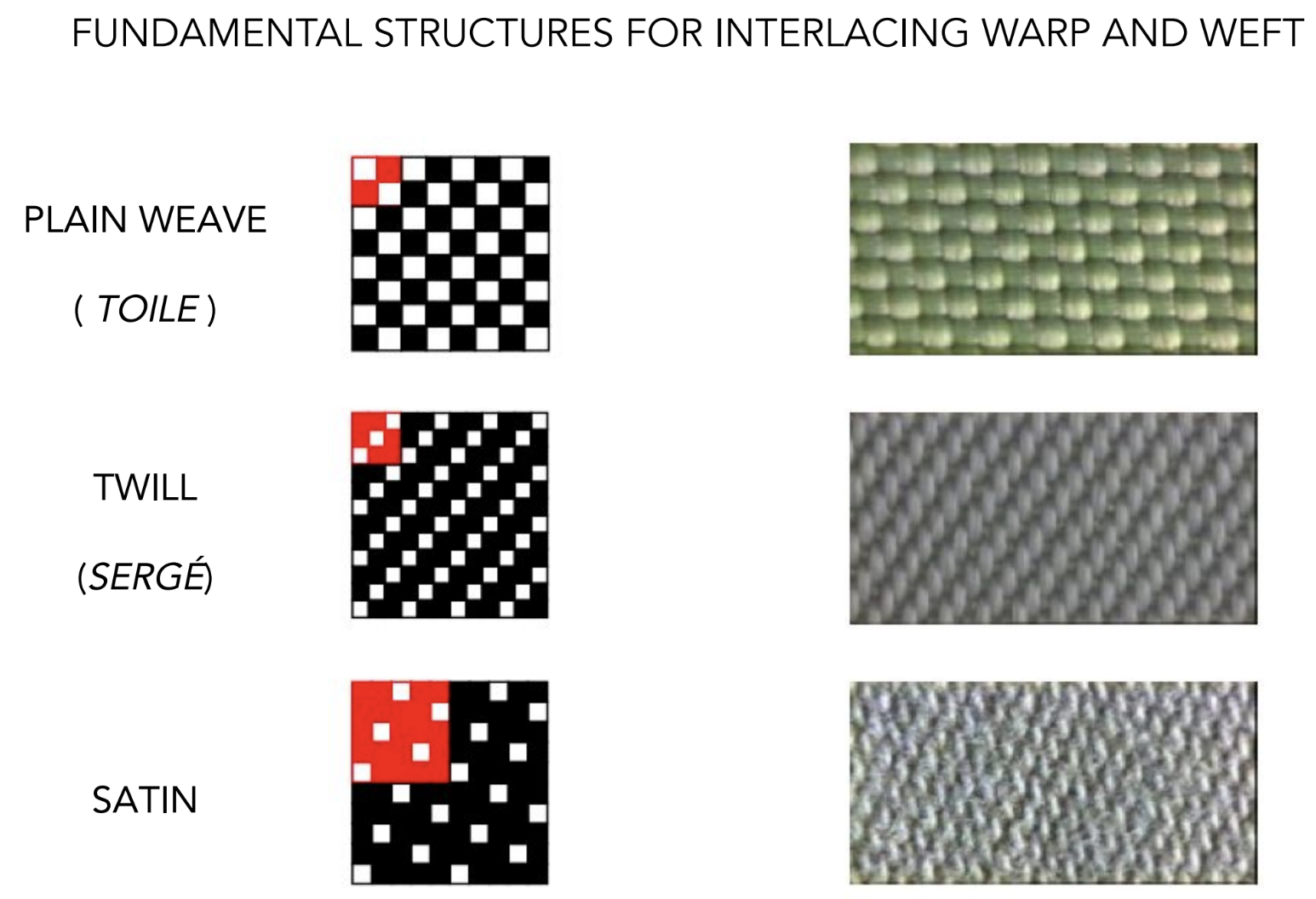
Plain Weave Process
Needs only 2 shafts
Pick 1: one over, one under
Pick 2: reversed; one under, one over
Plain Weave Qualities
High Stability
Flat
Plain Weave General
fabric has same face and back side
Very dif types of fabrics can be achieved depending on density, yarn

Plain Weave Examples
poplin, taffetas, crepe georgette, faille, etc
Plain Weave Variations
Basketweave
Corded Ottoman
Repp
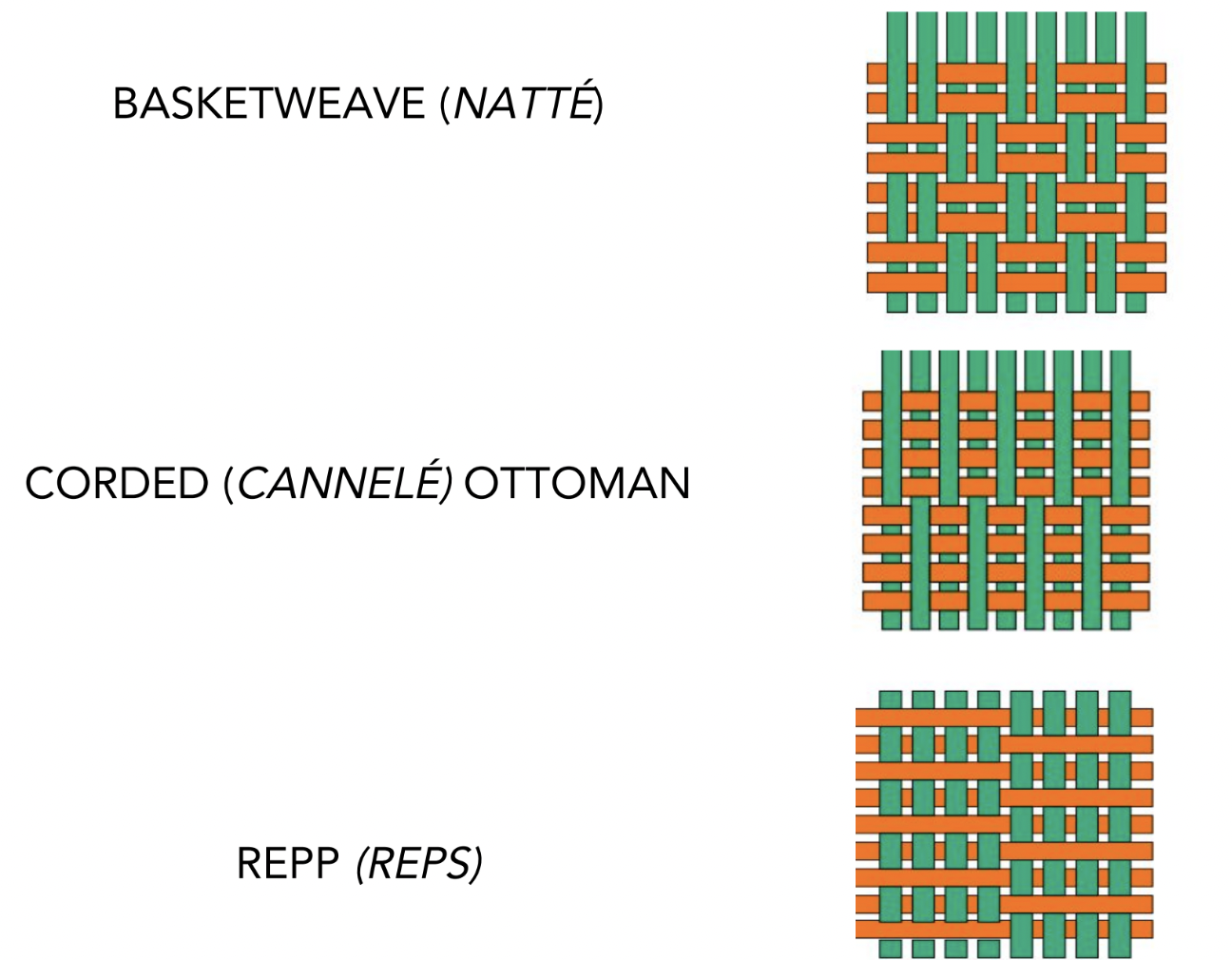
Variation of Basketweave
“Grain de Poudre”
used in tuxes by YSL
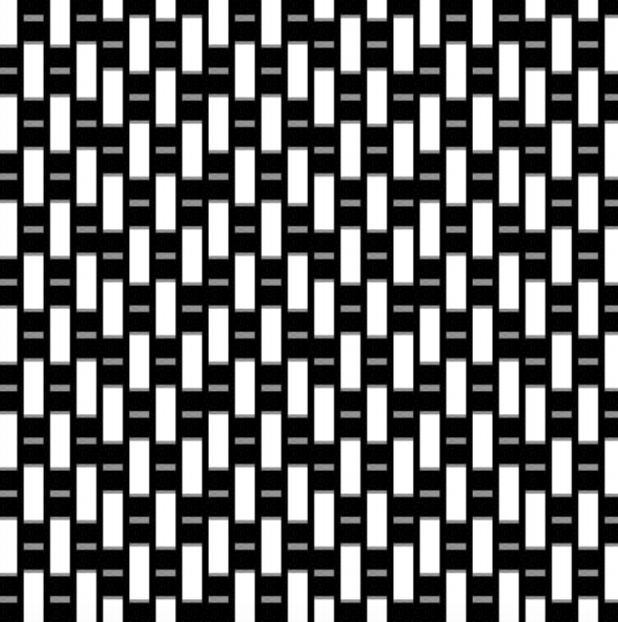
Twill General
Diagonal Weave
Fabric’s face and back can be different
Twill Process
Requires at least 3 shafts
1 over, 3 under
shifting 1 to right or left: 1 over, 3 under
shifting, etc
Twill Uses
Basic weave for denim, gabardine, tweed…
Twill Qualities
Stable, less rigid and flat than plain weave
Gabardine
2/1 or 2/2 twill weave, combed yarn
tight weave, more threads per cm in warp than in weft
diagonal at 63 degrees instead of 45
Gabardine Uses
military wear
trench coats
chinos
cargo pants
Gabardine Qualities
dense
flexible but w/good hold
clean diagonals
water-repellent effect
little creasing
Twill Variations - Cross Twill
over 2 under 2
fabrics face and back are identical
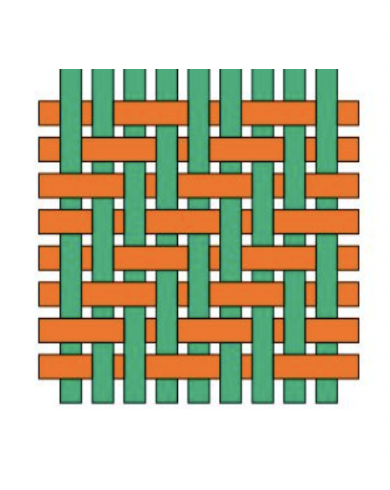
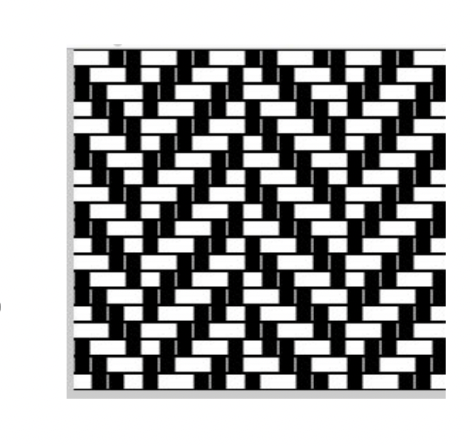
Twill Variations
chevron
Herringbone (broken chevron)
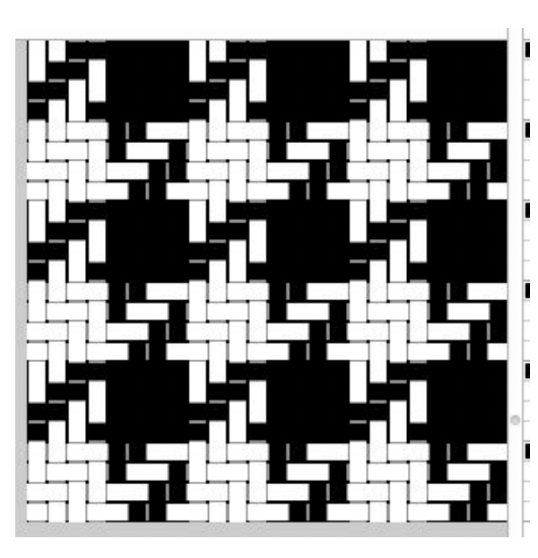
Twill Variations
Houndstooth
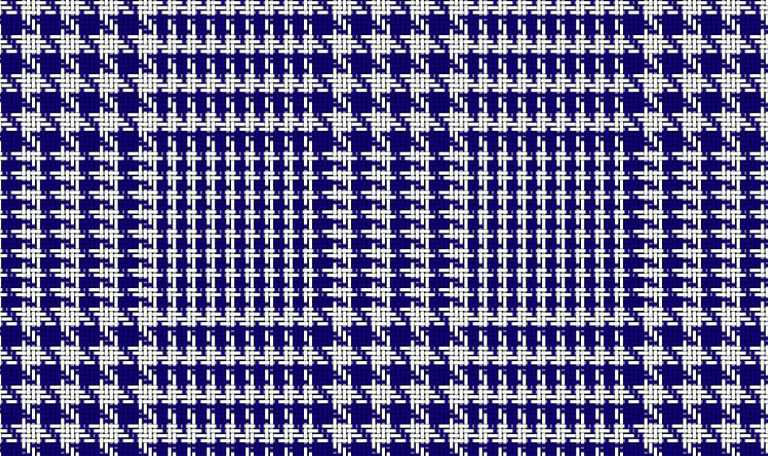
Twill Variations
Glen Check
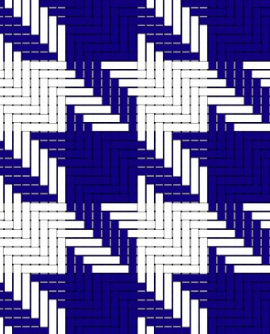
Twill Variations
Large Houndstooth
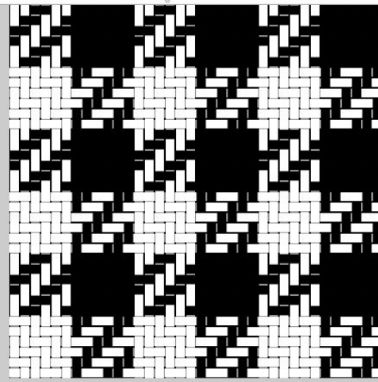
Twill Variations
Shepherd’s Check
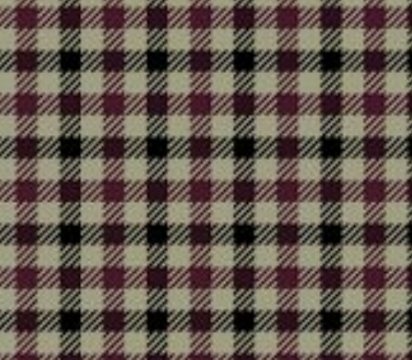
Twill Variations
Gun Club
Satin
Long floating yarns
needs at least 5 shafts
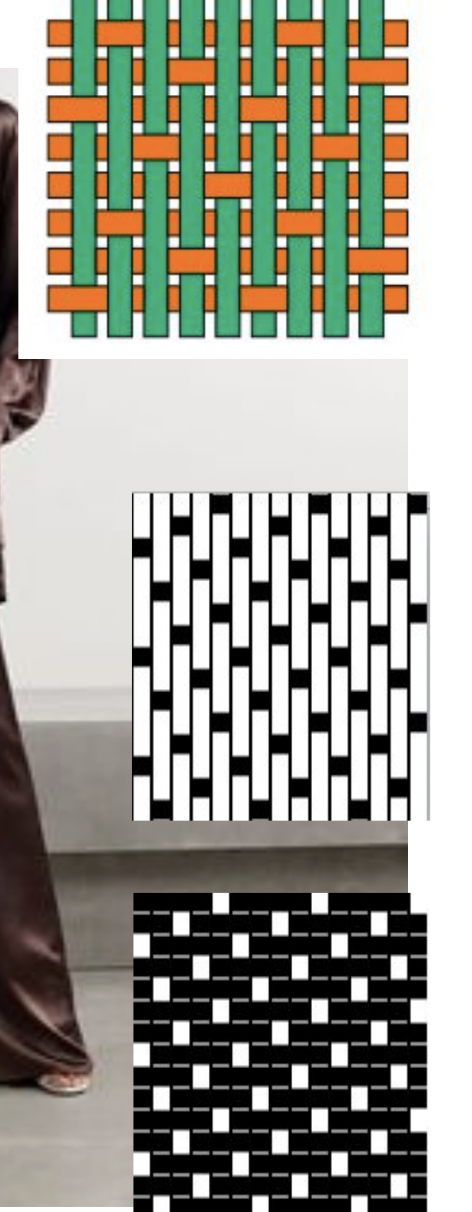
Satin Weaving Process
1 over 4 under
shift of 2 or more warp ends, then 1 over 4 under
“floats”
the warp (or weft) is predominant on each side
Satin: If difference in yarn shine
one shine side, one duller side
Satin Qualities
dense
fragile
smooth
more SLIPPERY than shiny
Complex Weaves
Based on variations and combos of core weaves (plain weave, twill, satin)
Visual and Texture Effects created by Complex Weaves
velvet
corduroy
waffle
cloqué
piqué
quilted
Figures Created by Complex Weaves
Jaquards
Brochés
Reversible fabrics created by Complex Weaves
Double Weave
Separable double face
Velvet - Corduroy
1 warp + 2 wefts:
1 weft for fabric base
1 weft for velvet’s “hair” (pile yarn)
Pile yarn cut at reg sections > RIDGES
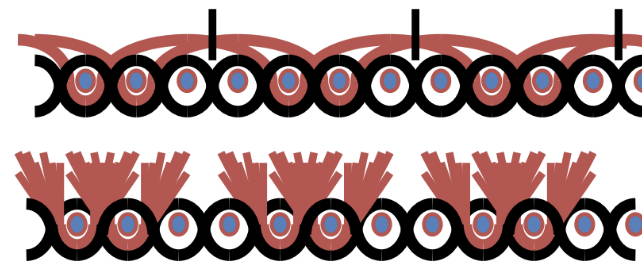
Smooth Velvet
1 warp + 2 wefts:
1 warp for fabric base
1 weft for pile yarn
pile yarn is cut EVENLY
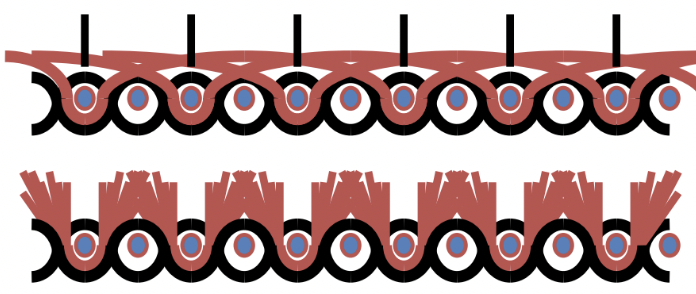
Piqué, Waffled, Quilted
Additional floats to create reg texture
in shirting called “Dobby”
Honeycomb
Weave with long floats
absorbant
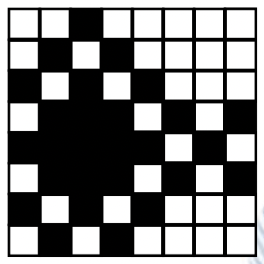
Seersucker
Cloqué and wrinkled effect: dif tension in warp, retraction of warp post weaving
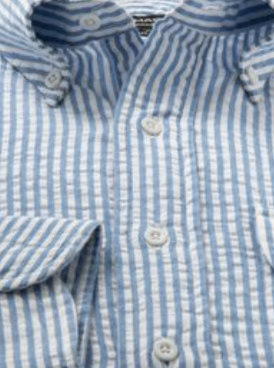
Inseparable Double Face
2 wefts and 1 warp or vice versa
additional weft or warp threads on fabric back bind w/weft or warp on fabric front
Separable Double Face
Fabric made of 2 warps and 2 wefts - w/binding threads linking 2 fabrics together
Jacquard Weaving
Invented by Joseph-Marie Jacquard in early 19th century
Improvement of the draw loom that employed children (“dobbies”)
Jacquard = 1st computer ever?
functions w/punch cards on basically binary system - programming
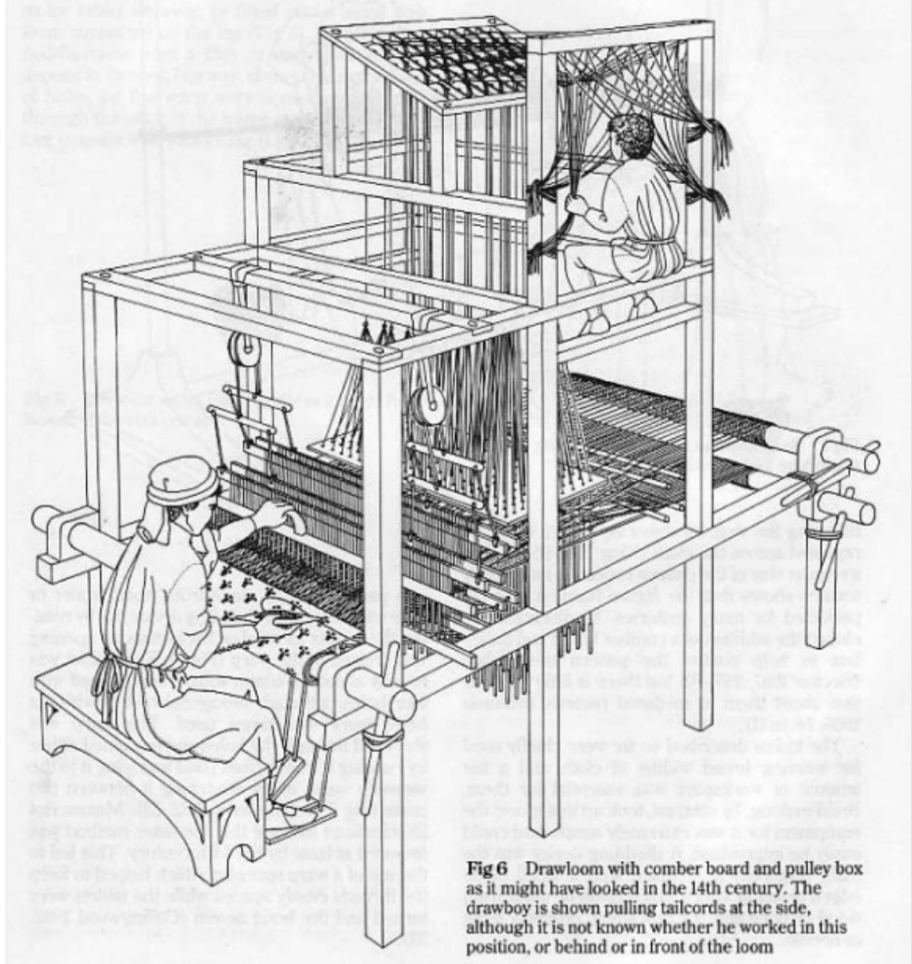
Jacquard Process
HEDDLES supporting the warp thread can MOVE INDEPENDENTLY (no shaft)
gives ability to weave very large, complex drawings and structures
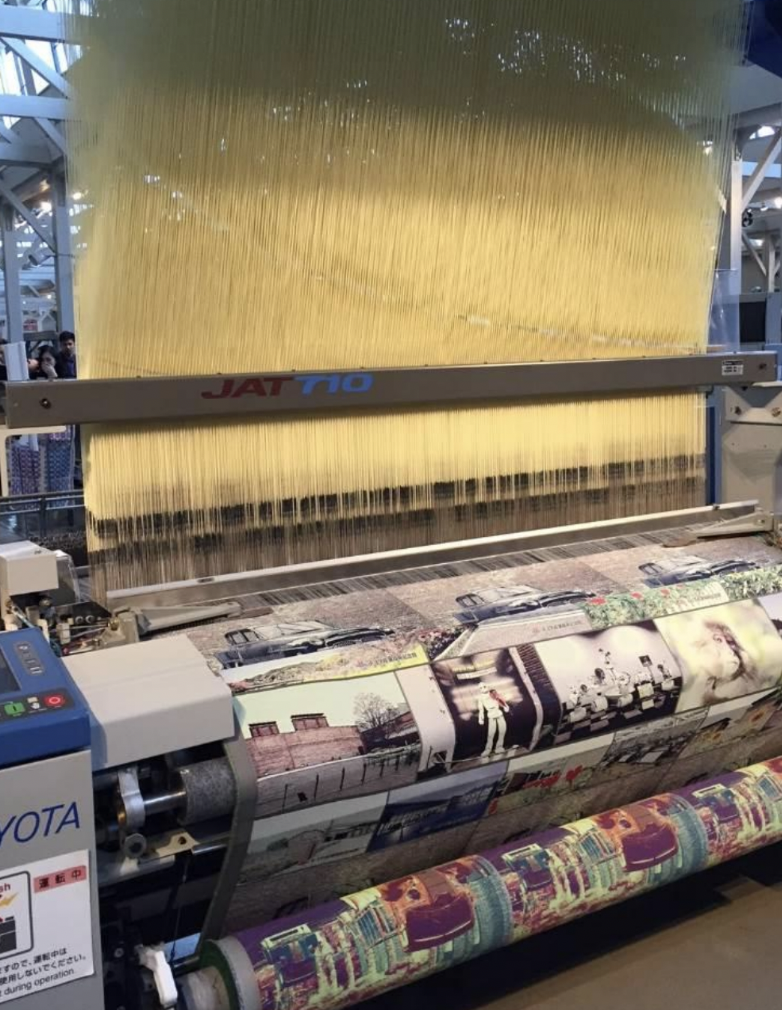
Damask
Monochrome jacquard
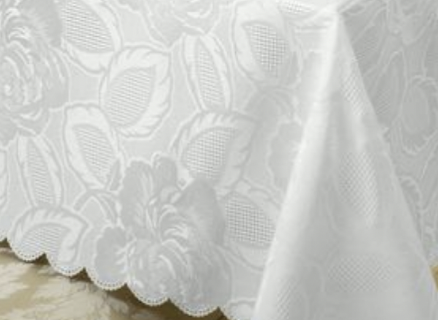
Brocade
Metallic and Lamé yarns
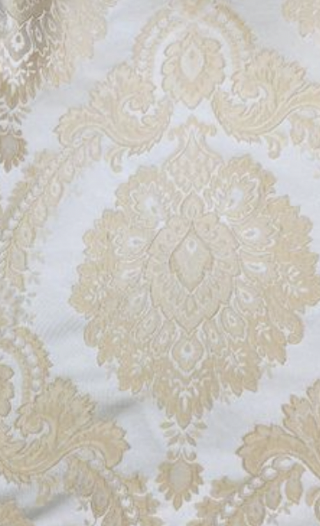
Cut-Yarn Jacquard
Technique used for spaced patterns
long floating yarns cut to a few millimeters around motifs edges - leaves tiny fringed border that frames motif
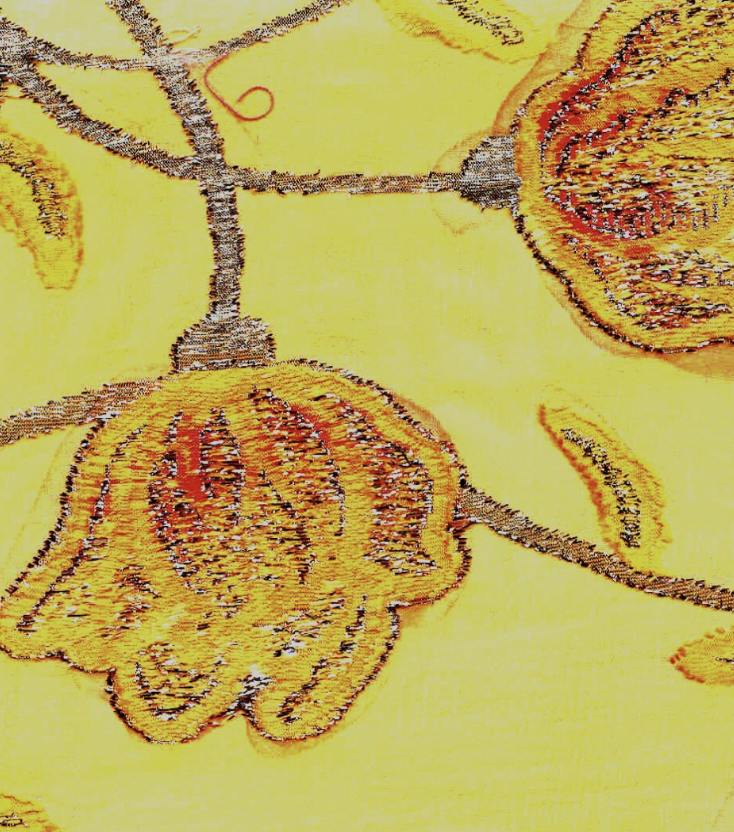
Figured Fabric
additional weft yarns dont run from one selvedge to the other in the fabric but only appear where the motif calls for it
Complex, delicate system usually used in expensive fabrics
helps avoid long floats to make light fabrics and limits material waste
